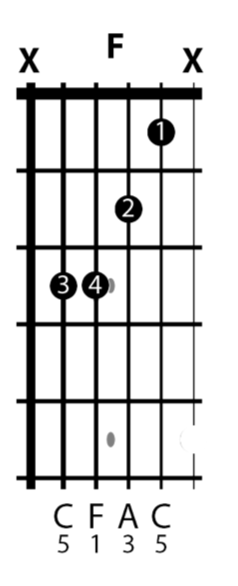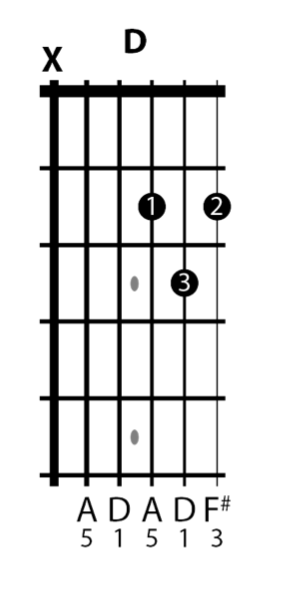The 3 Reasons Why You’d Mute Strings
Muting is a very important part of guitar playing. It’s also one of the things guitar students struggle with the most.
Depending on the situation, you either mute with your picking hand or fretting hand, or both.
There are 3 main reasons why guitar players mute strings:
- Keeping a clean sound by preventing neighboring strings from ringing.
- To beef up rhythm parts with muted, percussive hits, as used in for example funk rhythm guitar
- Palm muting. This is basically a sonic effect giving the notes a dampened sound by limiting the string vibrations.
Mutes in Funky Rhythm Parts
Here are a couple of fretting hand muting exercises taken from 3 well-known songs. These are going to keep you busy.
You can find the transcriptions of the parts taught in that video, here:
https://www.zotzinguitarlessons.com/blog/lets-get-funky-improve-your-rhythm-playing-become-a-funkmeister/
Cleaning Up The Playing
Then there is also the kind of muting where you deliberately prevent neighboring strings from ringing by touching them.
So for example, whenever I play triads on the top 3 strings, whatever finger I have on the G string, I use that finger to touch the D string so the D string can’t ring notes when I (accidentally) hit it.
You might think to yourself: “Why not just rest your picking hand on the guitar body, and just pick those strings with small wrist motions instead of using big, wide strum motions out of the arm, so you can avoid hitting strings you don’t want to hit?”
The answer to that question is that your rhythm wouldn’t flow, wouldn’t sound big, full, and strong, and would sound uneven without the big arm motions. So the solution is to mute the notes you don’t want in your chord/rhythm guitar part. The hassle of trying to avoid hitting certain strings while strumming is a surefire way to mess up your time feel.
A great song to practice this “muting neighboring strings” technique, is Led Zeppelin’s “Fool In The Rain”. The song’s verse guitar part is a series of triads played in pretty quick succession.
Following video shows the chords:
For the last G chord in the verse on the DGB strings, I mute the A string by touching it with the tip of the finger I have on the D string, and I mute the treble E string by gently touching it with the inside of my pointy finger that is fingering a note on the B string.
Here’s a muting example, using an F chord

In this F chord fingering, I would touch the treble E string with the inside of my pointy finger (which is fingering the C note on the B string). I’d mute the bass E string with the tip of my ring finger (which I am using on the A string to press the C note down with).
Muting With the Thumb
Sometimes you want to grab over with your thumb to mute the low E string.
A great example of this is the D chord shape.

The notes in a D chord are D F# A. You don’t want a low E open bass note to ring underneath a D chord, but you don’t have fingers on the neighboring A string to touch/mute the low E string. Solution: grab over with your thumb and gently touch the low E string with the inside of the thumb to prevent it from ringing.
Muting notes while switching chords might require some practice. You could strum back and forth between that F and D chord, trying to mute the strings with the described fingerings and techniques.
Here’s another rhythm example where it is better to mute with the thumb:
https://www.zotzinguitarlessons.com/blog/one-of-the-best-rhythm-exercises-to-develop-amazing-time-feel-on-guitar/
Once you get better at all the above, try your hands on this following blues comping technique.
This comping with guide tones rhythm style is a good muting exercise, because the rhythm style consists of hitting all 6 strings, but only ringing 2 notes (on the D and G string).
You’re basically muting 4 out of 6 strings. The low E string is muted with the thumb, the other muted strings are touched with the fingers we use to finger notes on the G and D string.
Just like in the above D and F examples, we are muting neighboring strings with the tip or insides of fingers that are fretting notes.
Palm muting
In this case, muting is used as an expressive tool to change the sound characteristics of the fretted notes, a bit like the pedal on a piano that dampens the strings, taking away the sustain.
You can hear palm muting in a wide range of guitar styles, from blues rhythm guitars to metal.
I always thought palm muting is a bit of a misnomer. Since the word “mute” in guitar playing is used to describe the sound of a dry, percussive attack, I always felt that “palm muting” should probably be called “palm dampening”.
When you use this technique, you’re dampening the string vibrations a bit, by resting the side of your picking hand slightly on the edge of the bridge, slightly touching the strings where they meet the bridge. This dampens the string vibrations, producing dampened notes.
You can hear and see me play this technique in the first part of Led Zeppelin’s “Bring It On Home” (beginning of the song), in the below video.
My picking hand is laying on the bridge, with the side/edge of my hand partially and lightly touching the strings right where the strings meet the bridge.
Experiment with this. Notice how, when you move your picking hand (that is resting on the bridge/strings) position a bit further away from the bridge towards the neck, the sound becomes too plinky. There is too much muting, the strings are too deadened, there’s not enough sustain anymore.
When your picking hand’s resting point moves too far in the other direction, to the point where your picking hand is laying on top of the bridge so far that the side of your hand is no longer touching the strings, then you’re no longer dampening the strings.
I always tell my students: “when you look at the edge/side of your hand (where your pinky is), whatever the size/thickness is of that side of your hand, have half of it lay on the bridge and half of it touching the strings.
Muting in Soloing
Muting becomes all the more important when you play guitar solos with overdrive or distortion. These effects are dynamics-based effects. They make the guitar pick-ups much more sensitive, and every little hand motion is going to create some sort of noise, the more high gain the distortion you’re using.
When soloing I mute with both my picking and fretting hands.
My picking hand lays on the bass strings when I am playing notes on the treble strings. That way the bass strings are muted, preventing them from adding any noise under my solo.
My fretting hand fingers are slanted so they are touching the treble strings that fall under my fingers that I’m not playing on.
In other words: my picking hand is laying on the string situated north of my pick (or in other words: above the string, I am playing on), and my fretting hand is muting the strings south/underneath the string I am soloing on.
Since my pick is vertically having to move from string to string, that means that that hand is constantly laying on the bass strings I’m not picking on at that time.
When notes of the solo are played on the bass string, then my fretting hand fingers are doing all the string muting. I slant my fingers so the inside of my finger, usually mostly the pointy finger, is touching the strings I don’t want to ring.
Conclusion
Hit me up anytime at vreny@zotzinmusic.com if you have any questions, or if you would like to book a lesson.
These free lessons are cool, but you will never experience the progress, joy, and results that my students experience in lessons when you’re learning by yourself from blogs and videos.
That is why people take lessons: way better results and progress, much more complete information, exposed to way more creative ideas than you can get from a blog or YouTube video.
There is only so much that self-study can accomplish.
If you want to see amazing results and progress in your guitar playing, buy your first lesson here and get started ASAP.
You’ll impress your friends and loved ones in no time with your guitar playing!
Consider donating any small amount to help me keep this blog going.
Thank you for your support!


